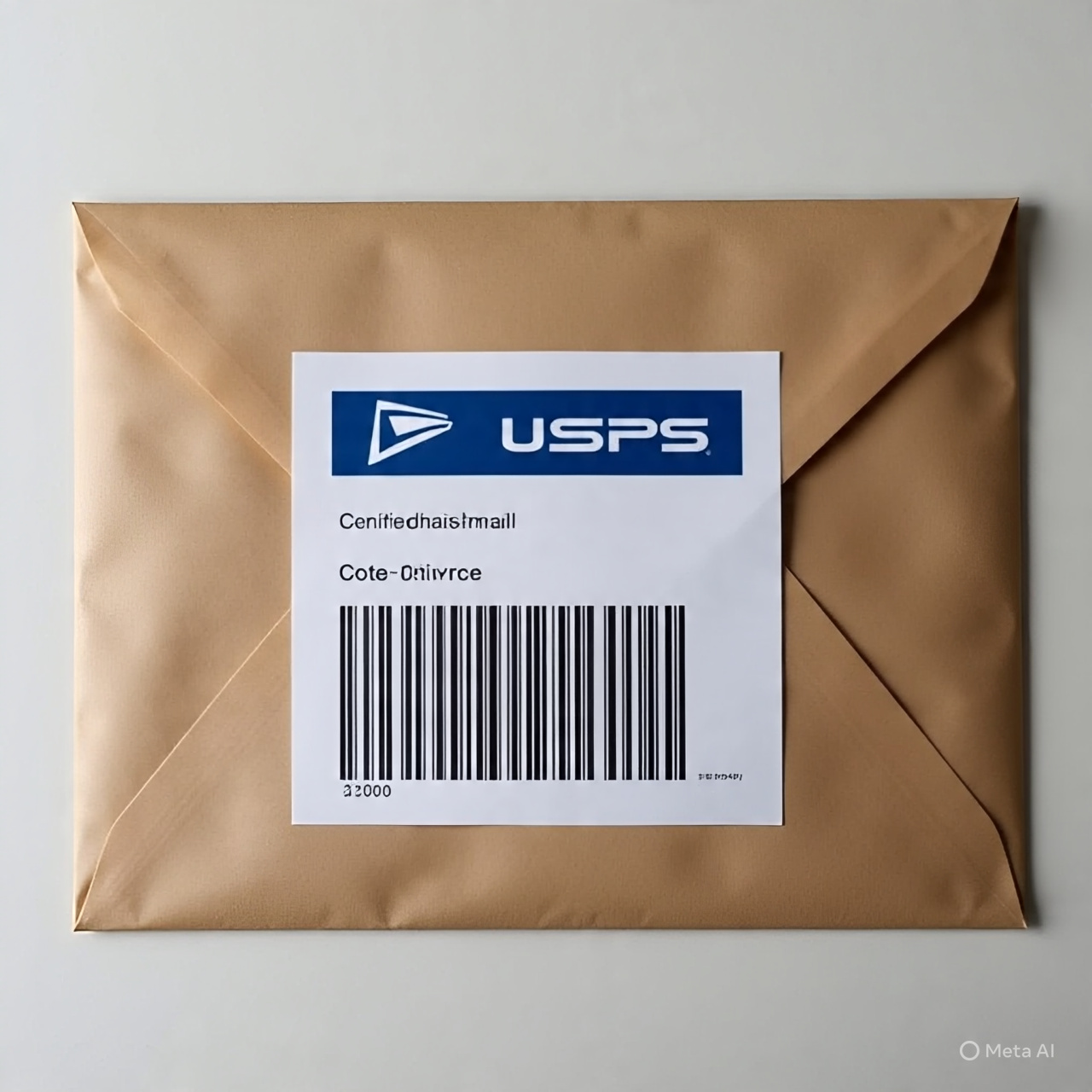Table of Contents
Introduction
Mailing may appear straightforward, but sometimes swift delivery alone isn’t sufficient. When sending significant documents, it’s crucial to ensure that your correspondence reaches its destination safely and legally. That’s where certified mail becomes indispensable—providing vital proof of both mailing and delivery. Whether for legal notices, business agreements, or personal correspondence, certified mail protects your interests.
What Is Certified Mail? Definition and Basic Concept
Understanding Certified Mail
Certified mail is a postal service that guarantees verification of sending and receiving mail. Unlike standard mail, it provides an official record confirming that your item has been dispatched and received. The primary aim is to offer assurance that your important documents are securely managed. This service is commonly utilized for legal notifications, contracts, or sensitive information.
How Certified Mail Works
Using certified mail is simple but requires specific steps. Begin by preparing your envelope and attaching a special form—typically PS Form 3800—for certification. After mailing, the postal service issues a unique tracking number. The recipient then signs for the mail upon receipt, granting you legal proof of delivery.
The USPS or alternative postal services oversee the entire process, ensuring safe transit through their systems. Tracking your mail allows you to monitor each phase until it reaches its destination, making certified mail a dependable choice for important communications.
Types of Certified Mail Services
There are various options available for certified mail, including:
Standard Certified Mail: Provides confirmation of both mailing and delivery.
– Certified Mail with Return Receipt: Sends a card back to verify item receipt by the recipient.
– Restricted Delivery:Limits delivery to a designated person or address, enhancing security.
Select the type based on how urgently you need it and how much proof you require. For legal documents or official communications, using the return receipt or restricted delivery options is often the best choice.
Key Features and Benefits of Certified Mail
One significant advantage of certified mail is tracking. Once sent, you receive a tracking number to check the delivery status online. When the recipient signs for it, you obtain an official receipt that holds legal weight.
Having delivery confirmation is crucial in various situations, such as legal disputes or contract enforcement. It’s akin to sending a letter and receiving a signed acknowledgment of its receipt.
Enhanced Security and Accountability
Certified mail includes security features that make tampering difficult, ensuring your documents remain protected until they reach the intended recipient. The requirement for a signature on delivery also holds the recipient accountable for receiving your correspondence.
This additional responsibility is why many legal and governmental entities require certified mail for sensitive documents.
Cost Considerations
Sending certified mail incurs higher costs than regular postage—generally an additional $3 to $7 per item, depending on the service. But is it worth the expense? Absolutely, especially given the peace of mind it provides. For legal, business, or personal correspondences, this modest extra cost is a wise investment compared to the risk of lost or contested mail.
Common Use Cases for Certified Mail
Legal and Court Submissions
Lawyers and courts frequently utilize certified mail to deliver notices or subpoenas, as it provides legally recognized proof of what was sent and received—vital in legal disputes.
Business Transactions and Notices
Businesses commonly send contracts, termination notices, or sensitive information via certified mail. This method minimizes the risk of disputes or loss, especially when adhering to legal deadlines or handling confidential transactions.
Personal Correspondence
Individuals also rely on certified mail for essential personal matters. Sending passports, estate documents, or official notices becomes more secure with receipt tracking.
Government and Official Communications
Numerous government agencies mandate certified mail for delivering official notices, violations, or permits, ensuring they have a record of when and how notifications were sent.
How to Send Certified Mail: Step-by-Step Guide
Preparing the Mail
Begin with robust packaging. Clearly write the recipient’s address and affix a certified mail form—typically PS Form 3800—onto the envelope. Ensure accuracy to prevent potential delays.
Visiting Postal Services or Using Online Options
You can either drop off your mail at the post office or utilize online services from USPS or third-party providers, some of which allow you to pay and print labels online for convenience.
Tracking and Confirming Delivery
After sending, monitor your item’s status using the provided tracking number. For added assurance, request a return receipt to receive a signed confirmation by mail, providing extra proof of receipt.
Important Considerations and Tips for Using Certified Mail Effectively
Understanding Delivery Restrictions
Be mindful that some countries may have regulations regarding international certified mail.Check these details in advance to prevent any issues or delays.
Keeping Records and Documentation
Always retain copies of receipts, tracking numbers, and signed confirmation slips. Store these securely as they serve as legal proof if necessary.
Legal Enforceability
To ensure your notice or document has legal standing, adhere to proper mailing procedures. Using certified mail with a return receipt gives the most reliable proof of delivery.
Common Mistakes to Avoid
Errors such as incorrect addresses, incomplete forms, or neglecting to follow up can jeopardize your case. Double-check all details before sending.
Conclusion
This service offers an enhanced level of security and verification that standard mailing options do not offer. Whether addressing legal matters, business transactions, or personal correspondence, it remains a trustworthy option that safeguards your documentation.
Always verify addresses, maintain comprehensive records, and select the appropriate service to suit your requirements. By incorporating certified mail into your mailing practices, you can ensure that your essential messages are treated with care and professionalism.



Pingback: How to Recall an Email in Outlook (2025 Guide) – Undo Mistakes Easily
Pingback: Elementor #566 - Ideas | Trends
Pingback: Elementor #577 - Ideas | Trends